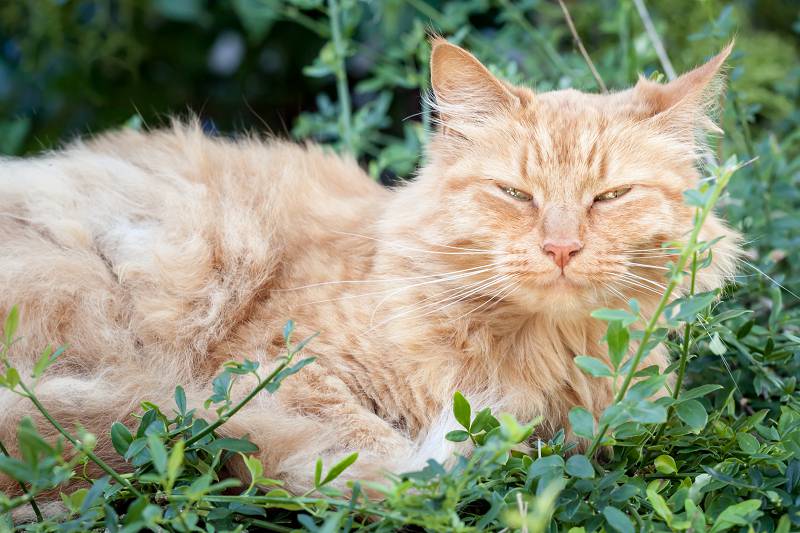
A senior cat care plan has specific challenges for you to address – just like the ageing human population! And, like us, prevention is better than the cure…
The types of problems senior cats experience
There are the ‘young old’ who have few health issues despite being of advanced years. And there are the ‘old old’ who have advanced years plus failing health systems and whose medical and maintenance care needs are complex and individual.
And then there is just the cranky or ‘demented old’ – and yes, cats can get dementia! But not as commonly, yet, as their people.
Most elderly cat behaviour problems are due to pain – especially feline arthritis.
If you are at all worried about the general health of your elderly feline then go see your vet NOW!
Every nephron in the kidney is worth saving, and each cancer cell that grows is one more that has to be destroyed by tough chemotherapy!
With an elderly feline friend. a visit to the vet (in time) can save at least one of those nine lives!
Common problems of the elderly cat include skin cysts and other skin disorders such as yeast infections (malassezia), tufts and knots because the arthritic cat cannot groom properly, skin allergies and infections as well as cat bites.
Infection in elderly felines is more serious because their immune system is not as strong or as stable, so any abnormality needs veterinary attention promptly.
An elderly cat with a heart murmur is likely to be in more trouble than a very young cat, whose heart murmur may well be benign. Elderly cats’ legs rarely cramp, most leg spasms are from internal disorders or nerve defects.
Old friends and gardens need time and patience to grow
Similarly, elderly felines need closer attention paid to their habits and condition, so prompt attention can be given to early warning signs of illness – a visit (to the vet) in time can save nine lives!
Cat illness starts subtly – your feline friend is good at hiding problems until they become critical.
This is a very useful strategy if you have no owner to care for you – the majority of cats will get eaten if they show signs of illness. They may be cute and cuddly but there is little co-operation in cat society outside of kittenhood.
And since every cat is born with the instincts and genes to survive in the wild (even the posh pussies of the Cat Fanciers (though a purebred will generally just hunt out another owner if they get lost!), it makes sense that they do not display weakness or infirmity.
Elderly feline medical conditions
Feline kidney disease
Declining kidney function affects 50% of elderly cats – sometimes as young as eight years old. Managing chronic renal failure (CRF) is one of the major challenges of geriatric feline medicine, but with so much more research, and so many more options, treating and managing cats renal function can extend a good quality of life for your feline friend for many years.
Feline cancer
Of course, cancer in the elderly cat is the second biggest medical issue that needs attention. The types of cancer are many and varied, and as with humans, the sooner identified as treatable or untreatable especially, the better for the comfort of your cat.
Lumps only get bigger, and weight loss only accelerates with ‘wait and see’.
Teeth cleaning
There is no such thing as routine dentistry in cats, especially once they are over the age of eight years. All dentistry, to be effective, has to be done under an anaesthetic, and the risk to an older cat – particularly for a prolonged procedure – are higher than for a young cat.
Question your vet about whether the anticipated benefits are actually proven to outweigh the risks. In my cat focused, feline only practice, I have found the only dental care in felines which actually benefits the cat is a ‘complete caudal clearance’. All the back teeth come out.
The front teeth – especially the canine teeth – are left behind for face shape and defense, and to make eating a bit easier. Better breath, greater kidney health and general longevity, and no repeated anaesthetics are the benefits of this major procedure. No other intervention can guarantee such enormous benefits. Teeth cleaning just doesn’t cut it.
